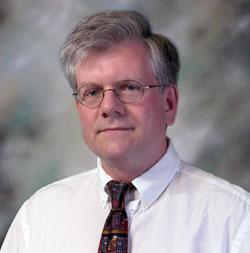
Stephen L. Pinel was elected the thirteenth honorary member of the Organ Historical Society at the June 2010 annual meeting. This is the highest honor the Society could bestow.
Pinel has been a member of the organization since 1971. While he has served under many guises, the award was granted primarily in recognition of his 26 years as National Archivist of the Society from 1984 to 2010. Under his leadership, the collection grew from a modest gathering of four filing cabinets and 20 boxes of books into the largest organ reference library in the world, with some 15,000 published volumes in all languages, a nearly complete run of organ serial titles, and a substantial collection of manuscripts, including the business records of numerous defunct American organ firms.
Pinel has also directed four international symposia, served as the chair of the 50th anniversary convention of the OHS in Saratoga, New York in 2006, and undertaken a number of successful fund-raising campaigns. He was previously honored by the society in 1989 when he received the Distinguished Service Award.
Pinel is a native of upstate New York, holds two degrees in sacred music from Westminster Choir College of Rider University, Princeton, and did graduate work at New York University, where he received a Langley Fellowship.
He has served on the music commission for the Archdiocese of New York, been the dean of the Central New Jersey AGO chapter, and was the chair of the St. Wilfrid Club of New York from 2008 to 2010. He has made several commercial recordings, written numerous articles, and is currently finishing his fifth book: The Work List of Henry Erben: Organbuilder in Nineteenth-Century New York.
He served at St. Joseph’s Church in Greenwich Village from 1980 to 1983, St. Cecelia’s Church in Iselin, New Jersey, from 1984 to 2004, and although now retired, has worked at St. Ann’s Church, in Hampton, New Jersey, since 2005.


